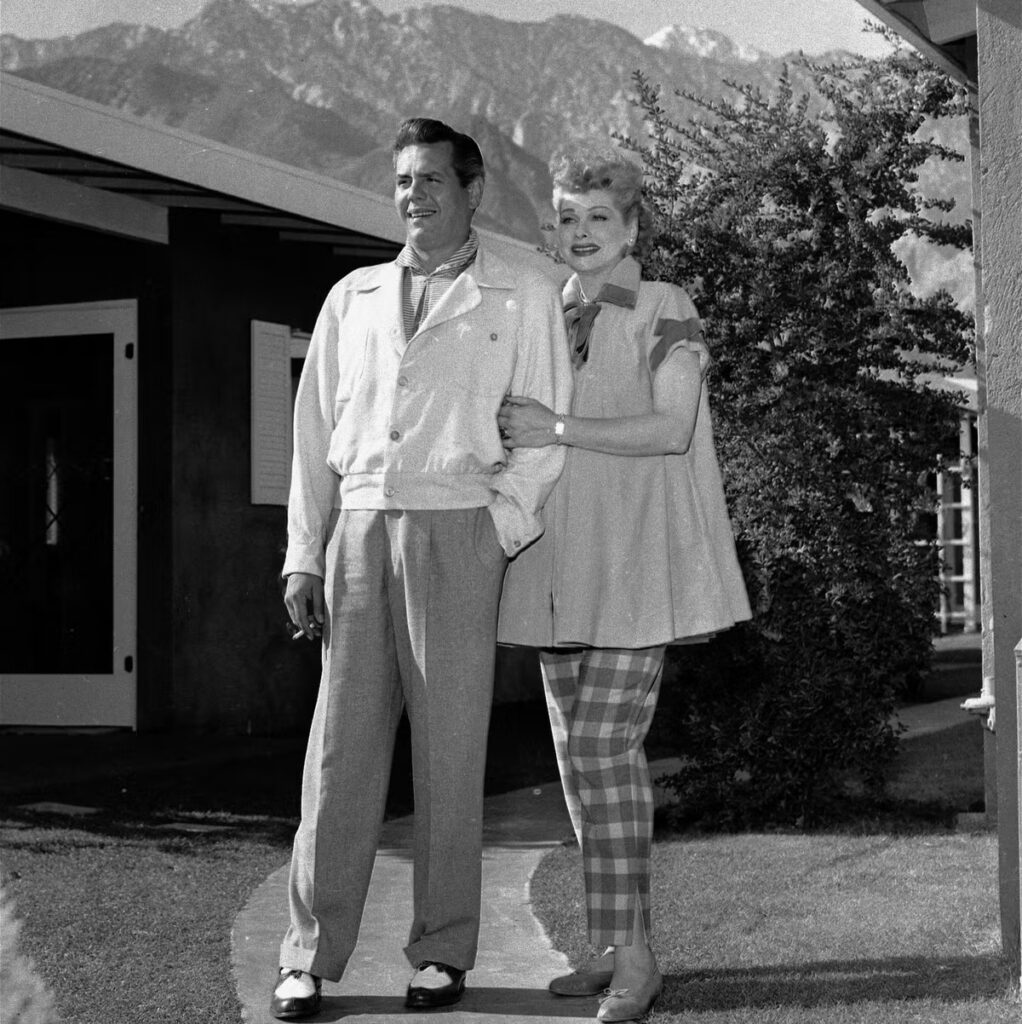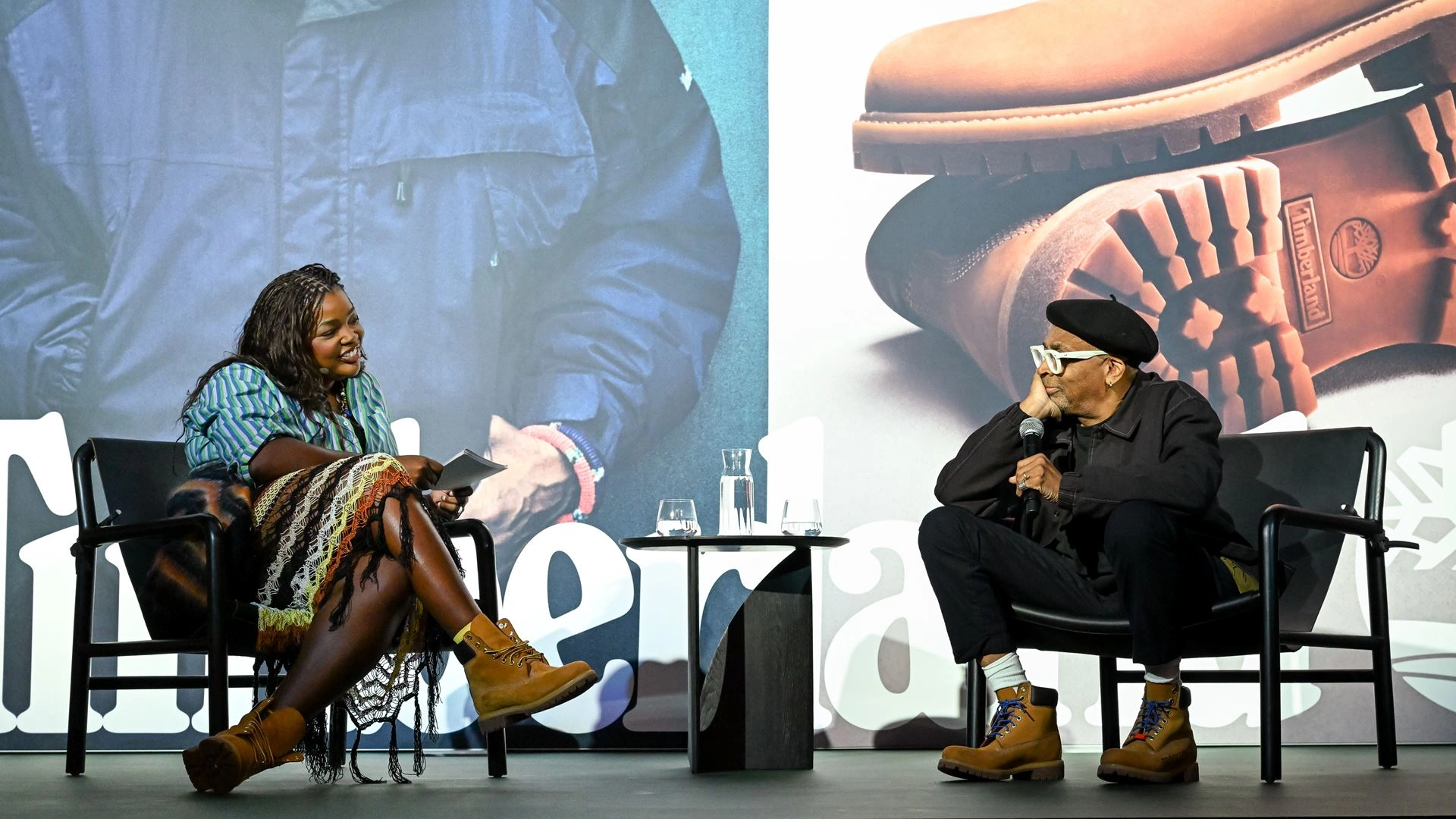Lucille Ball, the pioneering actress and producer, is remembered for many things: her iconic portrayal of Lucy Ricardo in “I Love Lucy”, her sharp comedic timing, and her groundbreaking role in shaping television through her production company, Desilu Productions. But beyond the laughter, the glitz, and the glamour of Hollywood, Lucille Ball had a private side—a life steeped in simplicity, tradition, and a refined yet eclectic interior design sensibility that reflected her upbringing, her tastes, and the evolution of her career and personal life. This private world was most prominently displayed in her beloved Desilu Ranch, a peaceful sanctuary where she and her husband of twenty years, Desi Arnaz, could escape the frenetic pace of Hollywood.
The Desilu Ranch, located in Chatsworth, California, stood as a symbol of respite and intimacy for the couple who were, in every sense, Hollywood royalty. Here, they spent their time away from the bustling sets of their shows, cultivating a lifestyle that was both bucolic and deeply personal. Their interior decor choices were influenced by Lucille’s distinct taste—one that leaned heavily toward Victorian sensibilities, in contrast to what she referred to as “bastard American” styles that often dominated mid-century design trends. Through her interior decor, Lucille sought to craft a home that was filled with warmth, character, and an understated elegance that reflected both her personal history and her desire for authenticity.
The Bucolic Charm of Desilu Ranch
For Lucille Ball, Desilu Ranch was more than just a property; it was a retreat from the pressures of celebrity life. Unlike their Hollywood Hills home, which was closer to the action of the entertainment industry, the ranch offered a secluded and serene environment where the couple could unwind, raise their children, and enjoy a sense of normalcy away from prying eyes. Surrounded by sprawling pastures, horses, and beautiful gardens, the ranch’s atmosphere was distinctly bucolic, embodying the tranquility of rural living that Lucille had come to cherish.
Lucille and Desi’s purchase of the ranch in the 1940s was emblematic of a yearning for stability and roots, especially given the unpredictable nature of their professional lives. The ranch, named in homage to their combined production company, Desilu, became their shared labor of love, a place where they could embrace the domesticity that often eluded them in the public eye. It was here that they celebrated birthdays, entertained close friends, and found solace from the tensions that arose both on and off set. The property featured multiple guesthouses, stables, and an expansive main house that blended elements of traditional and contemporary architecture.
Victorian vs. “Bastard American”
Lucille Ball’s design philosophy for Desilu Ranch was firmly rooted in her preference for Victorian-style decor, which she regarded as a more “true” and sophisticated approach to interior design compared to what she deemed “bastard American” styles. This term, which she often used to describe the trends of the 1950s and 1960s, referred to the haphazard and commercialized blending of different design elements that lacked cohesion and depth.
To understand Lucille’s fondness for Victorian decor, it’s essential to consider her upbringing and personal history. Born in Jamestown, New York, in 1911, Lucille was raised in an era where Victorian sensibilities still lingered. The homes of her youth were adorned with heavy draperies, intricately patterned wallpapers, and ornate furniture that exuded a sense of grandeur and permanence. These early influences shaped her aesthetic preferences, leading her to favor a style that combined elegance with comfort, tradition with a sense of whimsy.
In contrast, mid-century American design, with its emphasis on minimalism, clean lines, and synthetic materials, did not appeal to Lucille. She found it impersonal and lacking in the character that Victorian decor offered. Instead, she sought to create spaces filled with history and narrative—rooms that felt lived-in and meaningful, where each object told a story. To this end, the Desilu Ranch was furnished with a curated selection of antique pieces, plush fabrics, and vibrant colors that conveyed a sense of intimacy and nostalgia.
The interior of Desilu Ranch was a testament to Lucille’s commitment to her aesthetic vision. Upon entering the home, guests were greeted by a foyer that set the tone for the rest of the house. Ornate chandeliers hung from the ceiling, casting a warm, inviting glow over the dark wood furnishings and richly upholstered chairs. Heavy velvet drapes framed the windows, and the walls were adorned with intricate floral wallpapers in muted tones of burgundy, gold, and sage green. These elements combined to create an atmosphere that was both opulent and welcoming—a perfect reflection of Lucille’s personality.
One of the standout spaces in the home was the formal living room, where Lucille’s Victorian inclinations were most prominently displayed. The room featured a mixture of upholstered settees and carved wooden armchairs, all arranged around a large marble fireplace. Above the mantle hung an oversized gilded mirror, its frame adorned with delicate carvings and motifs. The use of lush fabrics—silks, velvets, and damasks—added a layer of tactile luxury to the space, while strategically placed porcelain vases and fine art pieces completed the look.
Lucille’s penchant for collecting was evident throughout the ranch. The home was filled with eclectic treasures she had acquired over the years, from porcelain figurines to vintage clocks, each piece carefully selected for its craftsmanship and beauty. In the dining room, an ornate mahogany table served as the centerpiece, surrounded by high-backed chairs upholstered in rich brocade. The walls were lined with china cabinets displaying her collection of fine bone china and crystal glassware, items she used to host intimate dinners and gatherings.
While Lucille’s adherence to Victorian decor might suggest a formal, somewhat rigid environment, she managed to strike a balance between grandeur and coziness. This was most evident in the private quarters of the ranch, where comfort took precedence over visual impact. The master bedroom, for instance, was a serene oasis of soft, muted colors and delicate patterns. The bed, with its intricately carved headboard and luxurious bedding, was the focal point of the room, while a pair of matching armchairs flanked a small writing desk, creating a perfect nook for quiet reflection or correspondence.
The kitchen, too, was a space that blended functionality with aesthetic appeal. Here, Lucille opted for a more relaxed, country-inspired style that complemented the Victorian decor of the main living areas. Open shelving displayed an array of colorful ceramic dishes, while the cabinetry was painted in a soft cream hue that contrasted beautifully with the dark stone countertops. A large farmhouse sink and a vintage-inspired stove completed the look, evoking a sense of rustic charm that was perfectly suited to the ranch’s bucolic setting.
The interior design of Desilu Ranch was not merely an expression of Lucille’s personal taste; it also played a role in shaping the dynamics of her marriage and family life. For Lucille and Desi, the ranch represented a shared project—one that allowed them to collaborate outside of the professional realm. They spent countless hours together choosing furniture, discussing color schemes, and planning renovations, experiences that deepened their bond and provided a counterbalance to the often tumultuous nature of their marriage.
The ranch also served as a haven for their children, Lucie and Desi Jr., who grew up surrounded by the beauty and tranquility of the property. Unlike the structured, high-society environment of Beverly Hills, Desilu Ranch offered a sense of freedom and adventure. The children spent their days riding horses, exploring the grounds, and participating in family gatherings that were far removed from the pressures of Hollywood fame.
Impression
Today, Desilu Ranch stands as a testament to Lucille Ball’s legacy—not only as an entertainer but also as a woman of discerning taste and an advocate for creating spaces that reflect individuality and authenticity. Her preference for Victorian design over contemporary trends speaks to her belief in the importance of staying true to oneself, even in the face of shifting cultural norms.
Lucille’s influence extended beyond the realm of comedy and television; through her interior design choices at Desilu Ranch, she demonstrated that style is not just about aesthetics, but about creating an environment that nurtures the soul and fosters meaningful connections. In an era where “bastard American” styles dominated, Lucille remained steadfast in her love for the elegant, the historical, and the unique—a philosophy that resonates to this day.
In essence, the Desilu Ranch was more than just a home; it was a reflection of Lucille’s journey—a place where the larger-than-life star could embrace her true self, surrounded by the things and people she loved. The ranch’s Victorian-infused decor, with its emphasis on quality, craftsmanship, and tradition, stands as a timeless reminder of Lucille Ball’s enduring legacy both on and off the screen.
No comments yet.








